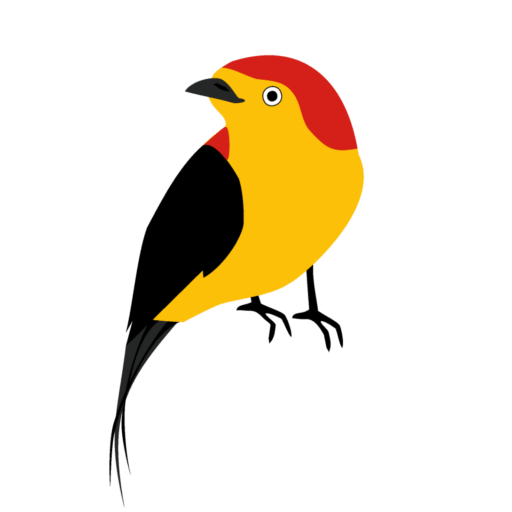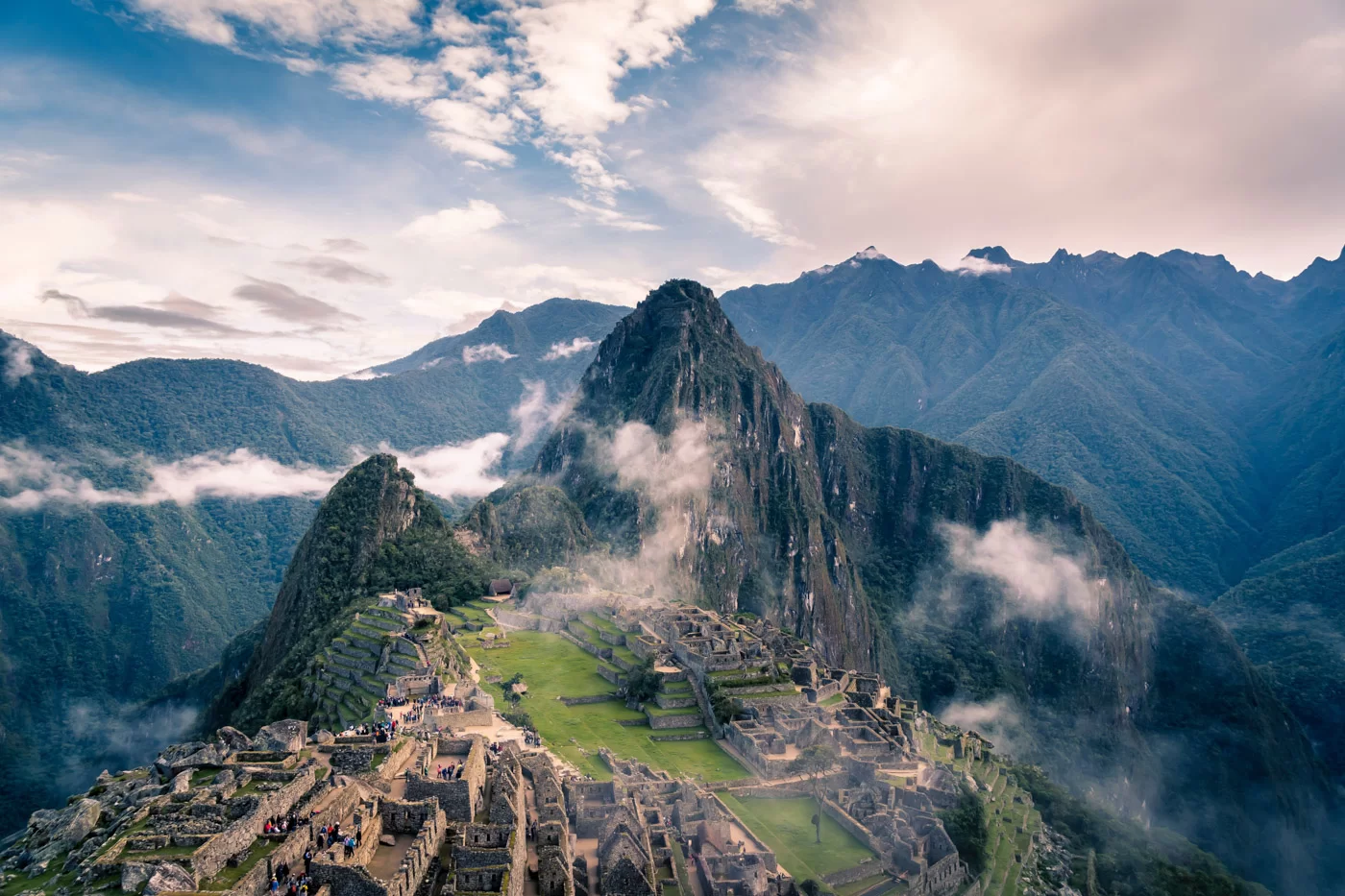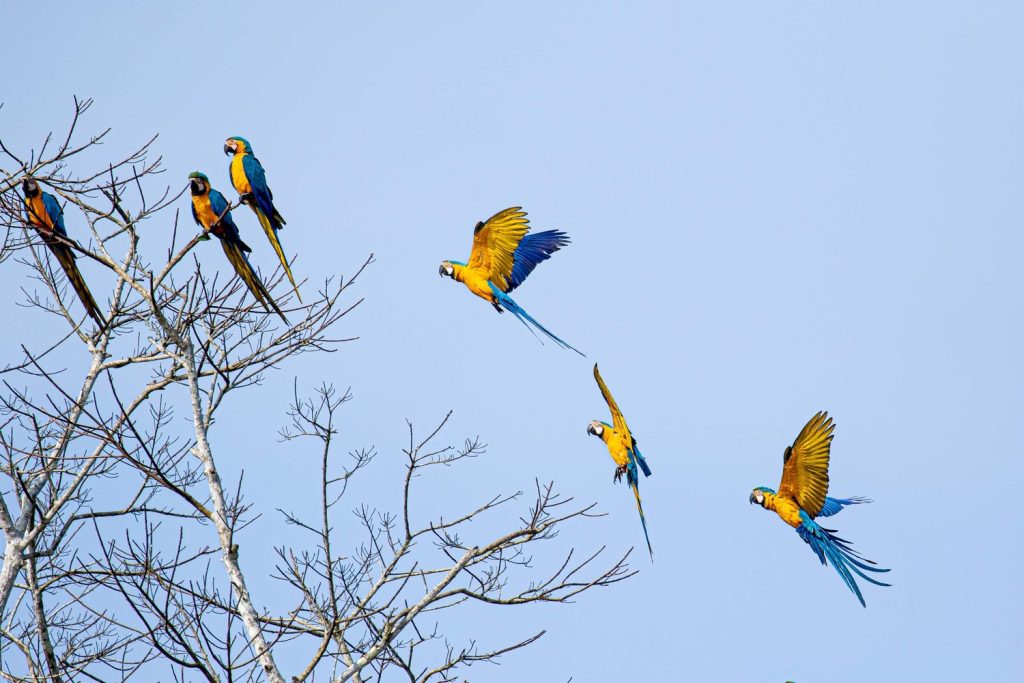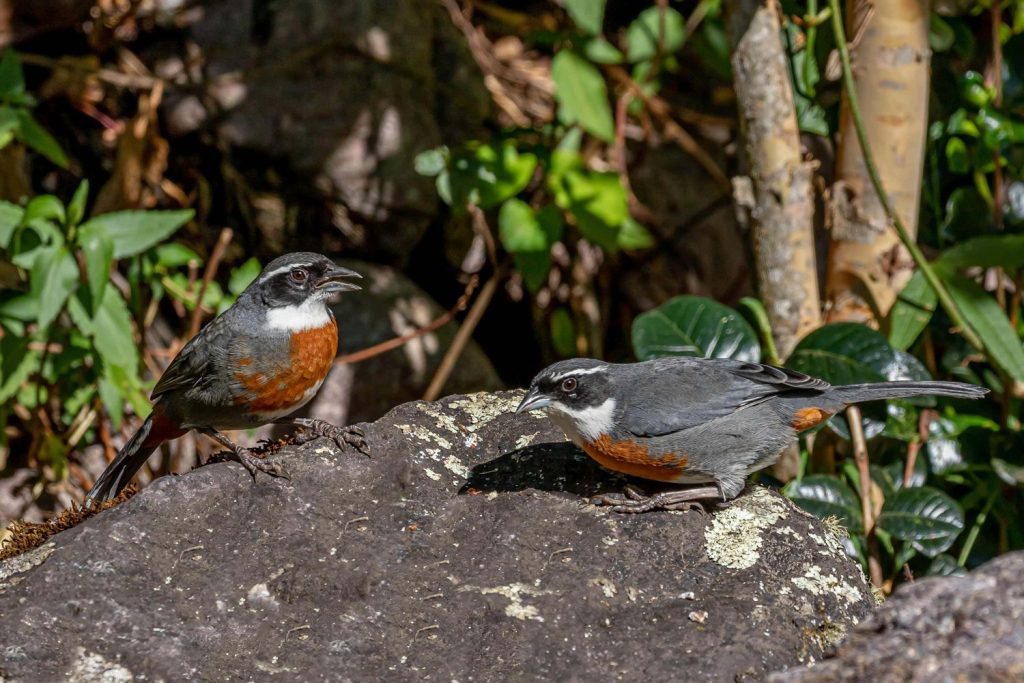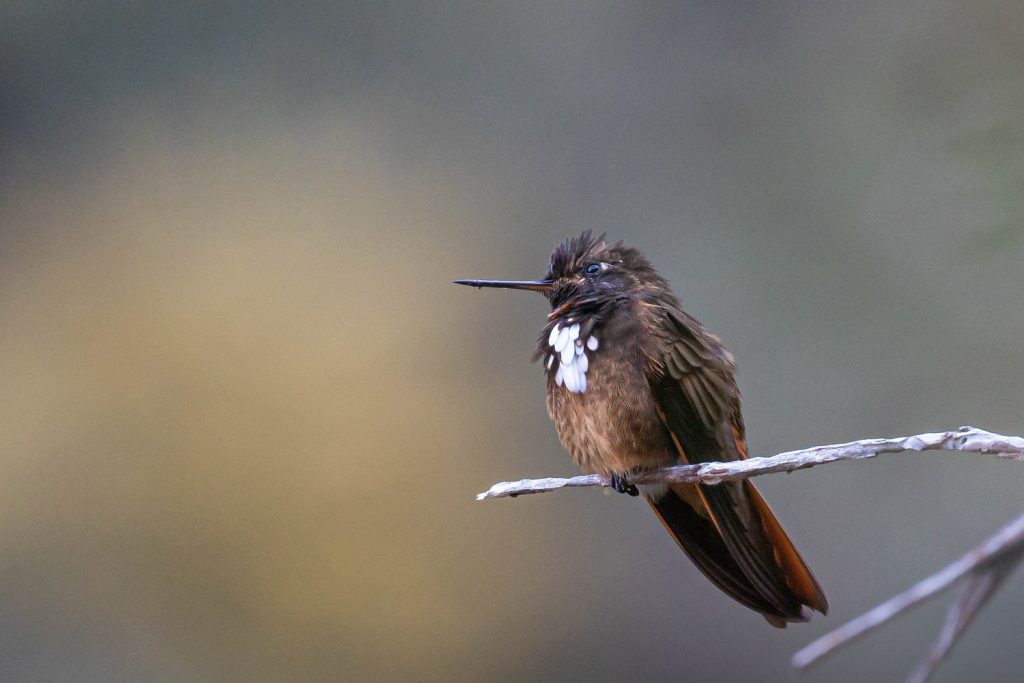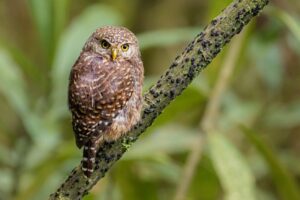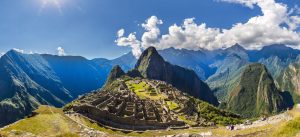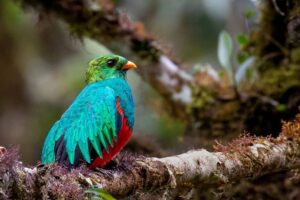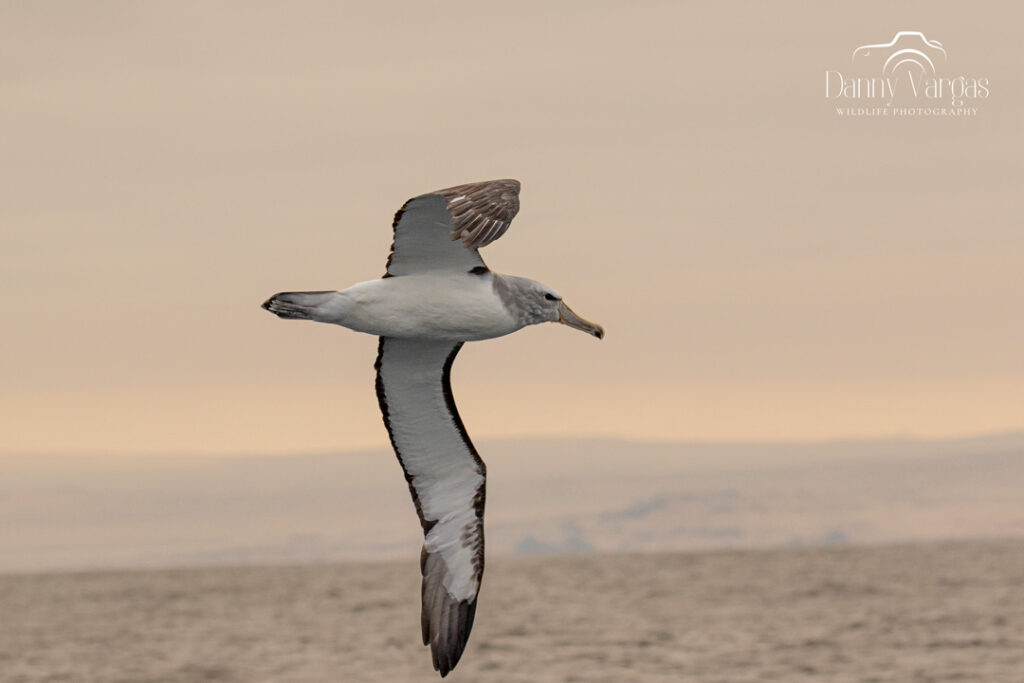Peruvian gastronomy is much more than food; It is a window to the rich history and cultural diversity of Peru. We would like to introduce one of the best cuisine in the world by Exploring Peruvian Gastronomy: Flavors, Stories and Secrets.
We invite you to embark on a unique culinary journey through this beautiful South American country. You will learn about the origins of Peruvian cuisine, its emblematic ingredients and the traditional cooking methods that have endured over the centuries. We will explore the famous ceviche, Peru’s national dish, and discover how it has become a culinary icon around the world.
Peruvian gastronomic fusion is an exciting topic, and you will immerse yourself in the combination of indigenous, Spanish, African and Asian influences that have shaped the unique flavors of Peru. This gastronomy is a mosaic of flavors, aromas and textures that reflects the cultural and geographical diversity of this South American country.
Peru, with its extensive coastline bathed by the Pacific Ocean, its rugged mountains and its dense Amazon jungle, offers a wealth of ingredients that few countries can match. From quinoa, guinea pig and corn to yellow pepper and fresh seafood, each region of Peru brings unique ingredients to its cuisine. Peruvian cuisine is known for its fusion of cultural influences. For centuries, indigenous people, Spaniards, Africans and Chinese have contributed to shaping current Peruvian gastronomy. This mix of traditions is manifested in dishes that combine the old with the modern, the local with the international.
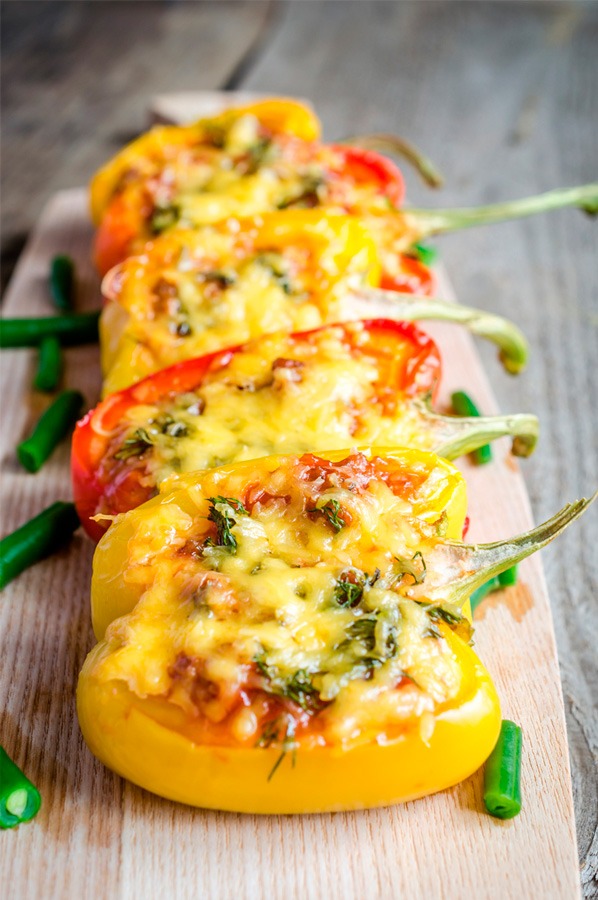
The Origins of Peruvian gastronomy
The first inhabitants of what we know today as Peru were the indigenous peoples who settled in this region thousands of years ago. These pre-Inca cultures, such as the Moche, the Nazca and the Chavín, already had a varied diet that included products such as corn, beans and quinoa. In addition, they were experts in fishing and hunting, which added a great diversity of proteins to their diet.
With the arrival of the Incas in the 15th century, Peruvian cuisine underwent a profound change. The Incas, known for their vast empire, implemented a food storage and distribution system that allowed greater stability in the diet of their inhabitants. They introduced the cultivation of potatoes, which would become one of the most important ingredients in Peruvian cuisine. However, the Spanish conquest in the 16th century brought with it a radical change in Peruvian gastronomy. The Spanish introduced new ingredients, such as beef, pork and wheat, as well as spices and aromatic herbs that enriched local flavors. This fusion of indigenous and Spanish ingredients gave rise to what we know today as «criolla food.»
Over time, Peruvian cuisine continued to evolve, incorporating African and Asian influences through the arrival of African slaves and Chinese and Japanese migrants. This mix of culinary cultures contributed to the creation of unique and delicious dishes.
Emblematic Ingredients
- One of the most iconic ingredients of Peru is corn. This ancient crop has a history dating back thousands of years, and is grown in an astonishing variety of colors and sizes. Corn is used in a host of Peruvian dishes, from chicha morada, a refreshing drink, to causa limeña, a delicious potato pie.
- The potato, also native to the Andes, is another fundamental ingredient. Peru is considered the center of potato diversity, and they are grown in a wide range of varieties. Some are ideal for preparing dishes such as papa a la huancaína or olluquito con charqui.
- The yellow chili pepper is a Peruvian chili that provides a unique flavor and a touch of spiciness to many preparations. Its use is essential in ceviche and the famous aji Amarillo sauce. In addition, ají panca, another Peruvian chili, is essential for the preparation of anticuchos and rocoto Relleno.
- Fish and seafood are an essential part of Peruvian coastal cuisine. In the waters of the Pacific, species such as sole, croaker and grouper are found, which are the basis of dishes such as ceviche and tiradito. Fresh seafood, such as shrimp and squid, are used in delicious preparations such as seafood rice.
- We cannot forget other important ingredients, such as guinea pig, a small rodent raised for consumption in the Peruvian mountains, and alpaca meat, which is found in some regions of the Andes. Both ingredients are appreciated for their unique flavor and their contribution to the diversity of Peruvian cuisine.
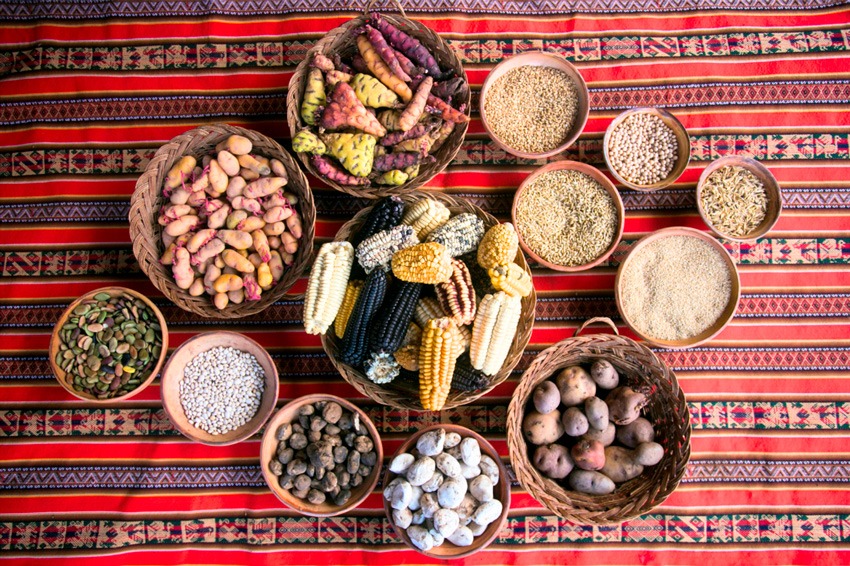
Ceviche: The National Dish
Ceviche is the most emblematic dish of Peruvian cuisine and deserves a special chapter in our gastronomic journey. This delicious preparation of fresh fish or seafood marinated in lemon or lime juice is an explosion of flavors and a sample of Peruvians’ passion for food.
Ceviche has become a global sensation and has conquered the palates of people in all corners of the planet. But its origin dates back to pre-Inca times when the coastal populations of what is now Peru already prepared it with fresh fish and seafood.
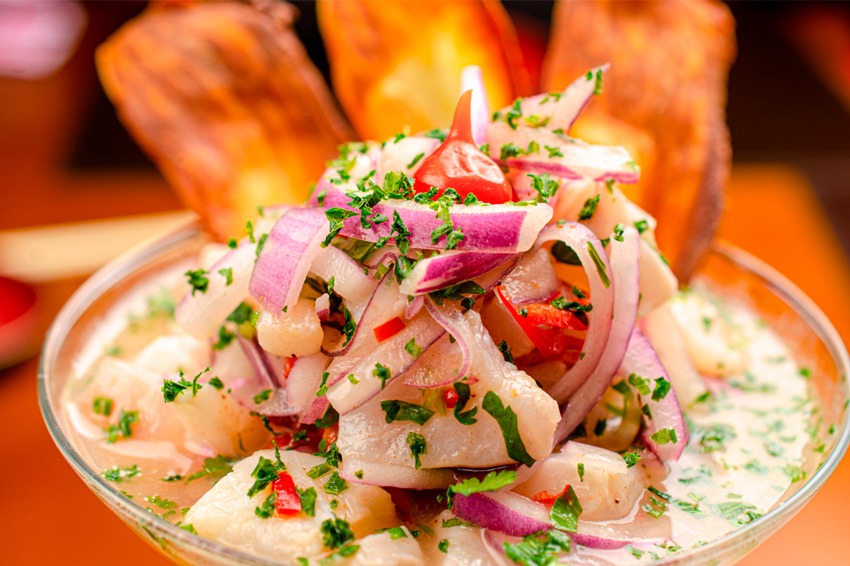
Which is the recipe?
The basic Peruvian ceviche recipe consists of fresh fish, usually sea bass or sole, cut into cubes, marinated in lemon or lime juice, seasoned with yellow chili, garlic, cilantro, red onion, and salt. The result is a refreshing and flavorful dish, perfect for sunny days on the Peruvian coast.
However, Peruvian ceviche is as versatile as it is delicious. Over the years, it has evolved to include regional variants. For example, in the northern region of Piura, ceviche is served with sweet potato and corn, while in the region of Arequipa, rocoto, a hot chili pepper, is added. Each place has its own unique interpretation of ceviche.
One of the most fascinating aspects of ceviche is the cooking technique. Lemon or lime juice «cooks» the fish, meaning that the raw fish becomes safe for consumption. This ancient technique is a testament to the culinary creativity of Peruvians.
Pachamanca and Other Traditional Cooking Methods
Peruvian gastronomy not only stands out for fresh dishes such as ceviche, but also for the diversity of traditional cooking methods that have been used for centuries to prepare food.
Pachamanca is an ancient cooking method that originated in the Peruvian Andes. Its name comes from the Quechua words “pacha,” which means land, and “manka,” which means pot. In essence, pachamanca is underground cooking that combines hot stones with foods such as:
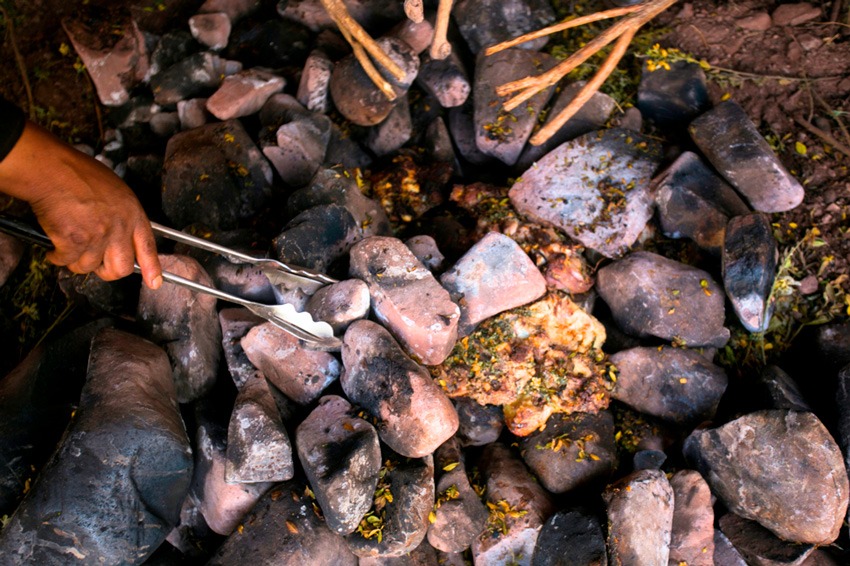
- Pork
- chicken
- potatoes
- sweet potatoes
- corn
- aromatic herbs
Everything is wrapped in banana leaves and placed in a hole dug in the ground, where the hot stones are buried.
This slow, indirect cooking process infuses a smoky, earthy flavor into the ingredients, creating a unique culinary experience. Pachamanca is a celebration of the connection between land and food, and is a dish traditionally prepared during festivals and special occasions.
Huatia?
Another traditional cooking method in Peru is “huatia,” which involves cooking food under hot stones in an earthen oven.
Juane?
In the amazon basin of Peru, bijao (Calathea lutea) leaf is used to wrap foods that are steamed or grilled, creating dishes such as «juane,» a preparation of rice with chicken and spices wrapped in bijao leaves.
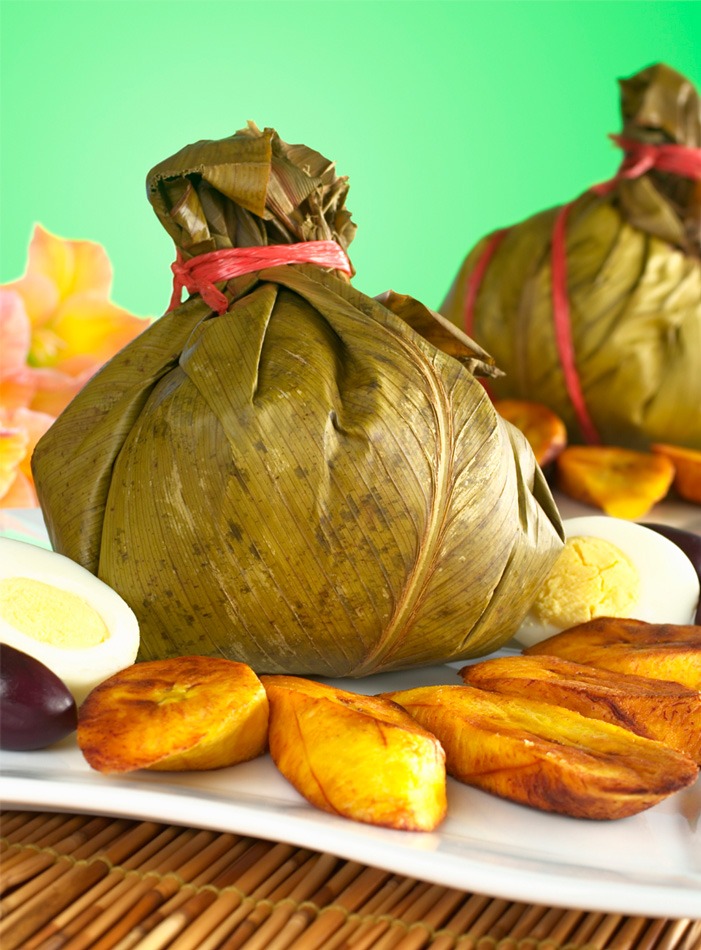
These traditional cooking methods are a testament to the ancient wisdom of Peru’s indigenous people and their deep respect for the land and natural ingredients.
Fusion in Peruvian Gastronomy
Peruvian gastronomic fusion is one of the most fascinating aspects of its cuisine. Throughout its history, Peru has received culinary influences from all over the world, and has known how to integrate them in a unique and delicious way.
One of the most notable examples of gastronomic fusion in Peru is chifa food.
Chinese influence
Chifa food is the result of Chinese influence in Peruvian cuisine. At the end of the 19th century, Chinese immigrants arrived in Peru and began preparing dishes that combined local ingredients with Chinese techniques. From this union a variety of dishes were born, such as arroz chaufa, a Peruvian version of fried rice, and tallarín saltado, a fusion of noodles and meat sautéed with soy sauce.
Japanese Influence
Another important influence comes from Japanese cuisine, which gave rise to Nikkei food. Japanese immigrants who came to Peru in the 19th century brought their love of raw fish and rice, creating dishes like tiradito, a Peruvian version of sashimi, and Nikkei sushi.
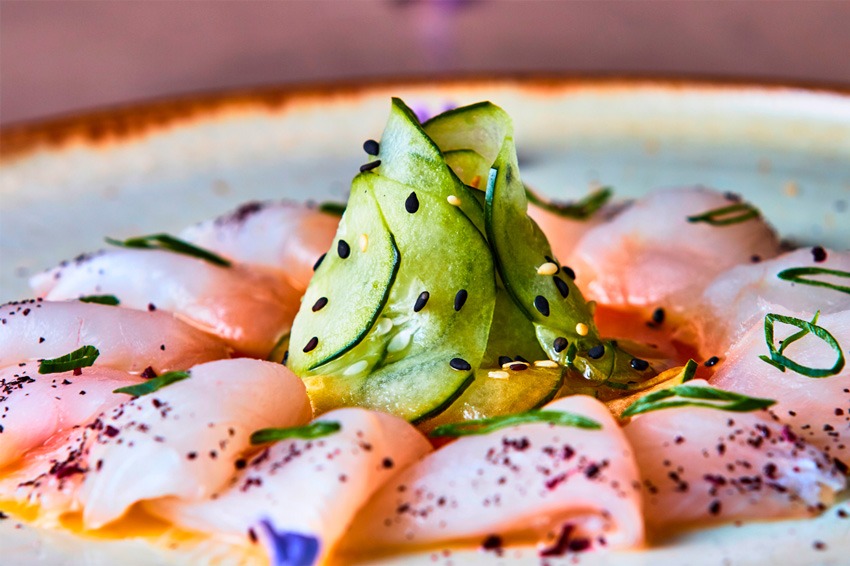
Italian influence
Peruvian cuisine has also benefited from Italian influence, reflected in dishes such as “anticuchos de corazón,” beef heart skewers marinated in chili and vinegar, an adaptation of traditional Italian barbecue. Additionally, Spanish fusion is evident in dishes like lomo saltado, which combines local ingredients with Spanish influences. The diversity of climates and regions in Peru has also contributed to gastronomic fusion.
On the coast, dishes such as ceviche and tiradito have been developed, which take advantage of the abundance of fresh fish. In the mountains, the food is more substantial, with stews such as rocoto Relleno, which combines ají rocoto with meat and cheese, and in the jungle, exotic ingredients such as yuca and plantain are found that are used in unique preparations. Thus developing the famous Peruvian gastronomy
Emblematic Dishes of the Coast
The Peruvian coast is a region rich in marine and agricultural resources, which has given rise to a variety of emblematic dishes in the gastronomy of this area.
Ceviche
Let’s start with ceviche, a dish that we have already mentioned but that deserves a special place in this chapter. The Peruvian coast is famous for its fresh and delicious ceviche, prepared with fish or shellfish, marinated in lemon or lime juice, and seasoned with chili, cilantro and onion. Each coastal region has its own version of ceviche, and it is a delicacy enjoyed throughout the country.
Tiradito
Tiradito is another coastal dish that deserves attention. Similar to ceviche, tiradito is made up of raw fish cut into thin slices and bathed in a lemon or lime sauce with yellow chili. It is usually served with slices of sweet potato and corn, toasted corn.
Cuy chactado
In the northern region of Piura, «guinea pig chactado» is an emblematic dish. It consists of a marinated guinea pig (guinea pig), flattened and fried until crispy. It is served with golden potatoes and a chili-based sauce.
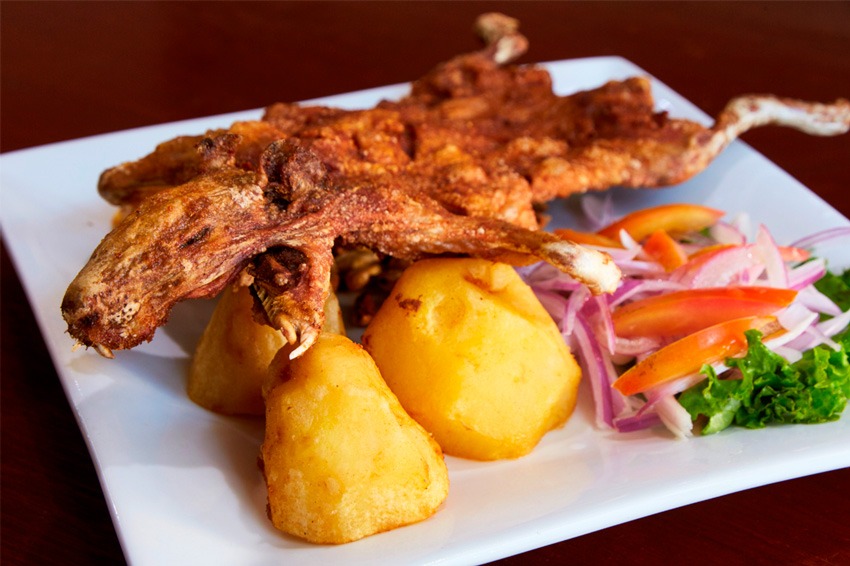
Causa Limeña
Causa Limeña is a traditional dish from Lima that combines layers of mashed yellow potatoes with tuna, chicken or seafood, seasoned with yellow chili and lemon, and garnished with hard-boiled eggs and olives. It is a colorful and delicious dish that represents the culinary creativity of the Peruvian coast.
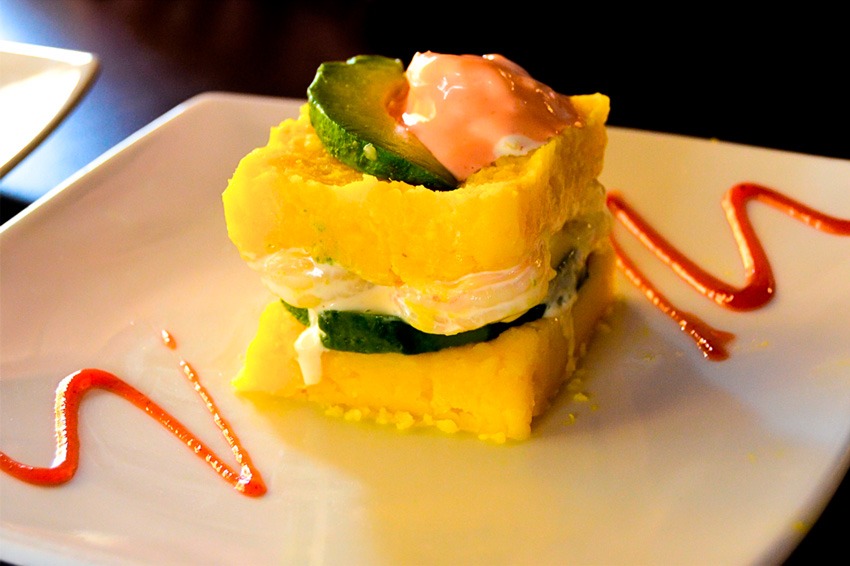
Shambar
In the Trujillo region, «shambar» is a traditional dish that is consumed mainly at carnival. It is a thick soup that combines pork, mote corn, beans, rice and aromatic herbs.
These are just some examples of the emblematic dishes of the gastronomy of the Peruvian coast, but the list is endless. The coast is a region blessed with a wide variety of fresh ingredients and a rich and diverse culinary culture.
Emblematic Dishes of the high Andes
The Peruvian highlands are a mountainous and fertile region that has given rise to traditional dishes rich in flavors and unique cooking techniques.
One of the most iconic dishes of mountain gastronomy is “rocoto stuffed.” Rocoto is a type of Peruvian chili that is known for its spicy flavor. In this dish, the rocotos are filled with a mixture of ground meat, fresh cheese, egg and spices, and baked until golden brown. Stuffed rocoto is a tasty and spicy dish that represents the richness of mountain cuisine.
Cuy al palo
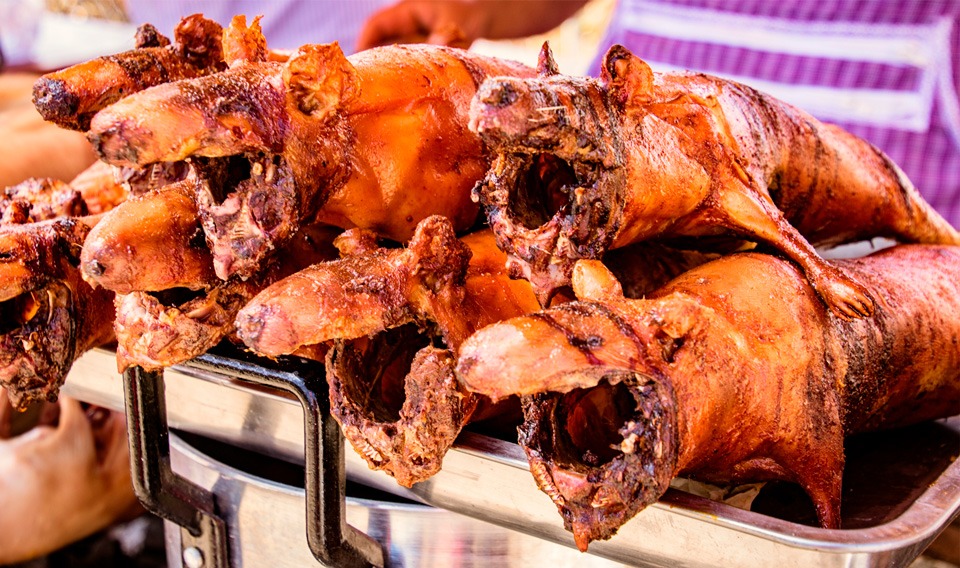
The «guinea pig» is another emblematic food of the Peruvian mountains. This small rodent is an important source of protein in the diet of mountain communities. Cuy is prepared in various ways, but one of the most traditional is to grill it and serve it with potatoes and a yellow chili sauce. Its tender meat and characteristic flavor are appreciated by lovers of Peruvian food. To learn more about this typical dish, go to our blog: Cuy: tradition and gastronomy
Pachamanca
“Pachamanca” is a dish that we mentioned in a previous chapter, but it is worth highlighting again. This underground cooking technique is particularly popular in the mountains. It is prepared with beef, lamb, pork, chicken, potatoes, sweet potatoes and corn, all marinated with aromatic herbs and slowly cooked under hot stones and banana leaves. The result is a tender, smoky meal with an unmatched flavor.
Causa
The «causa stuffed» is another emblematic dish of the mountains, similar to the Lima causa that we mentioned previously. However, in this case, the mashed potatoes are filled with a mixture of chicken, beef or tuna, and decorated with hard-boiled egg and olives.
The Peruvian highlands are a region where the cuisine adapts to the altitude and climate, using local ingredients and unique cooking techniques. Each dish tells a story of tradition and survival in a challenging environment.
Emblematic Dishes of the Rainforest
The Peruvian jungle, with its exuberant biodiversity and tropical climate, has given rise to a unique and fascinating cuisine.
Tacu Tacu
One of the most notable ingredients of the jungle is “tacu tacu,” a dish that combines rice and beans, often seasoned with garlic, chili, and aromatic herbs. Tacu tacu is served with meat, fish or shellfish, and is an example of the versatility of Amazonian cuisine.
Juane
«Juane» is a typical dish from the jungle region of Peru, especially during the San Juan Festival. It consists of a rice dough mixed with chicken meat, olives, eggs and spices, all wrapped in bijao leaves and steamed. Juane is a delicious combination of flavors and textures that celebrates the abundance of the amazon basin.
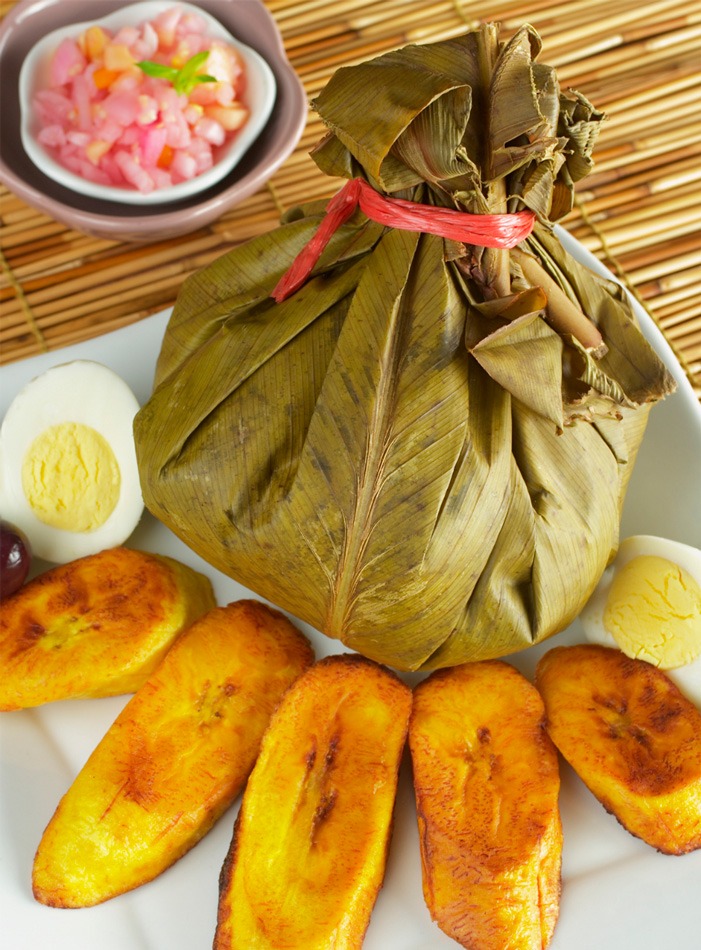
Inchicapi
“Inchicapi” is a typical jungle soup that combines chicken, peanuts, yuca and plantain. Peanuts give a unique flavor and creamy texture to the soup, which is complemented by local aromatic herbs.
Cecina
«Cecina» is a smoked meat that is prepared in the peruvian amazon and is an important source of protein. Cecina is often served with fried plantains and yucca, creating a tasty and filling dish.
Jungle tamales
“Tamales selváticos” are a variant of tamales found in the Peruvian jungle. They are made from corn dough filled with pork, chicken or fish, and are steamed in bijao leaves. Jungle tamales are a traditional food enjoyed at festivals and celebrations.
The Peruvian amazon offers a wide range of ingredients, from exotic fruits to game meats, which give rise to unique and delicious dishes. Jungle cuisine reflects the close relationship that local communities have with their natural environment and their deep knowledge of the available resources.
Peruvian Drinks: Pisco and More
Peruvian gastronomy is not limited only to food dishes; also includes a variety of unique and delicious drinks. In this chapter, we will explore some of Peru’s most iconic drinks, with a special focus on pisco.
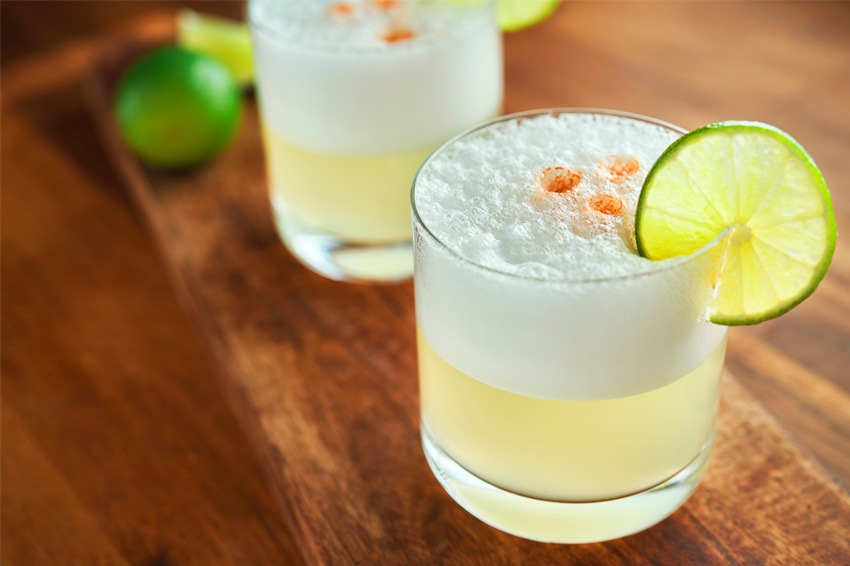
Pisco sour
“Pisco” is a grape spirit produced in Peru and is an integral part of the country’s culture and identity. It is distilled from specific grape varieties and aged in wooden barrels to develop its characteristic flavor. It can be enjoyed alone or in cocktails, with the “pisco sour” being the most famous of all. This cocktail combines pisco, fresh lime juice, simple syrup, and egg white, and is served with a dash of Angostura bitters on top. It is a delicious explosion of sweet and sour flavors.
Chicha morada
Another important drink in Peruvian culture is “chicha morada.” This drink is prepared from purple corn, which is cooked with spices and sugar to obtain a deep purple liquid. Chicha morada is refreshing and has a sweet flavor with hints of cinnamon and cloves.
Aguaje
In the Peruvian jungle, you will find Aguaje (Mauritia flexuosa), a fruit with an exotic flavor that is used to make juices and smoothies. Aguaje is known for its high content of vitamin C and antioxidants, and its unique flavor makes it appreciated by locals and visitors.
Mate de coca
«Coca tea» is a traditional infusion that is consumed in the highest altitude areas in Peru, such as the mountains. It is prepared from coca leaves, which are infused in hot water. This drink is not only comforting but is also considered useful in relieving altitude sickness.
Emoliente
The «emollient» is a hot drink that is prepared from aromatic herbs, such as barley, linseed and horsetail. It is usually served with lemon and consumed as a medicinal and refreshing tea.
The diversity of drinks in Peru reflects the wealth of natural ingredients available throughout the country and the creativity of Peruvians to make the most of them. Peruvian food is not only a matter of exquisite flavors, but also an expression of identity, history and culture. Each dish tells a story, whether it’s merging cultures, adapting to challenging environments, or celebrating holidays and family gatherings.
Peruvian cuisine is a testament to its people’s passion for food and their desire to share their culinary heritage with the world. Below is a list of some of Peru’s most iconic dishes.
If you are interested on safety in Food, drinks and other general information see here.
Most restaurants accept Credit Card or cash in Soles or US Dollars, see more about the Peruvian Currency and how to deal with it here.

